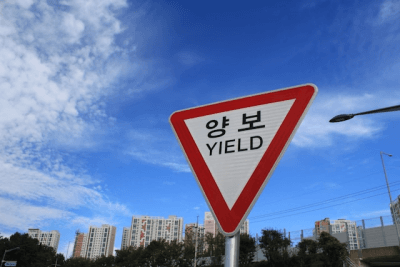Hello! This is your classmate again.
Today, we will dive into the principles of formin Korean syllables. Understanding how Korean syllables and Korean characters are structured is a fundamental part of learning the Korean language. By the end of this post, you’ll have a clear and comprehensive understanding of how Korean syllables are formed. Let’s get started!
1. The composition of Hangul Consonants for Korean Syllables
Hangul consonants represent the sounds produced when the tongue, lips, or oral muscles meet or come into contact. In total, there are 14 basic consonants in Hangul. Let’s take a look at these 14 basic consonants together!
- ㄱ: giyeok (sounds like “g”)
- ㄴ: nieun (sounds like “n”)
- ㄷ: digeut (sounds like “d”)
- ㄹ: rieul (a mix of “r” and “l”)
- ㅁ: mieum (sounds like “m”)
- ㅂ: bieup (sounds like “b”)
- ㅅ: siot (sounds like “s”)
- ㅇ: ieung (silent when at the beginning, sounds like “ng” at the end)
- ㅈ: jieut (sounds like “j”)
- ㅊ: chieut (sounds like “ch”)
- ㅋ: kieuk (sounds like an aspirated “k”)
- ㅌ: tieut (sounds like an aspirated “t”)
- ㅍ: pieup (sounds like an aspirated “p”)
- ㅎ: hieut (sounds like “h”)
2. The Composition of Hangul Vowels for Korean Syllables
Hangul vowels represent how sounds are made through changes in the shape of the mouth. There are 10 basic vowels in Hangul. Let’s explore them together!
- ㅏ: a (sounds like “ah”)
- ㅑ: ya (sounds like “yah”)
- ㅓ: eo (sounds like “uh” as in “cup”)
- ㅕ: yeo (sounds like “yuh”)
- ㅗ: o (sounds like “oh”)
- ㅛ: yo (sounds like “yoh”)
- ㅜ: u (sounds like “oo” as in “moon”)
- ㅠ: yu (sounds like “yoo”)
- ㅡ: eu (sounds like “uh” with lips slightly tightened)
- ㅣ: i (sounds like “ee” as in “see”)
These vowels are the building blocks of Korean syllables. With some practice, you’ll get used to how they sound and how they’re written!
3. How Hangul Syllables Are Formed: Combining Consonants and Vowels
The way words are formed in Korean is different from English. In English, letters are arranged to form words. However, in Korean, consonants and vowels are combined to create a single character. Then, several characters come together to form a word.

Hangul syllables are created using three components: initial consonant (초성) + vowel (중성) + final consonant (종성). To introduce myself and explain how Hangul syllables work, let me use my name, 같은반친구 (classmate in English), as an example:
- 같 (Gat): ㄱ (g) + ㅏ (a) + ㅌ (t)
- 은 (Eun): ㅇ (silent) + ㅡ (eu) + ㄴ (n)
- 반 (Ban): ㅂ (b) + ㅏ (a) + ㄴ (n)
- 친 (Chin): ㅊ (ch) + ㅣ (i) + ㄴ (n)
- 구 (Gu): ㄱ (g) + ㅜ (u)
Here’s the basic rule: every syllable starts with a consonant. The vowel that follows determines how the consonant is pronounced. Lastly, a consonant called the batchim (final consonant) may or may not be added, depending on the word.
This simple yet logical structure makes Hangul unique and easy to learn with practice. Let’s try creating some syllables together!
4. Let’s Practice How Hangul syllables are formed
Shall we practice how to form sounds together? Let’s use some examples inspired by the trending topic of Rosé’s apartment!
가. 아파트 (Apt.)
- 아 (A): ㅇ (silent) + ㅏ (ah)
- 파 (Pa): ㅍ (p) + ㅏ (ah)
- 트 (Teu): ㅌ (t) + ㅡ (eu)
☞ In South Korea, we call the Apartment as Aprt(아파트).
나. 브루노 마스 (Bruno Mars)
- 브 (Beu): ㅂ (b) + ㅡ (eu)
- 루 (Ru): ㄹ (r/l) + ㅜ (oo)
- 노 (No): ㄴ (n) + ㅗ (oh)
- 마 (Ma): ㅁ (m) + ㅏ (ah)
- 스 (Seu): ㅅ (s) + ㅡ (eu)
다. 로제 (Rosé)
- 로 (Ro): ㄹ (r/l) + ㅗ (oh)
- 제 (Je): ㅈ (j) + ㅔ (e)
Through these examples, you can see how consonants and vowels come together to create syllables. Why not try forming some syllables of your own?
5. Conclusion: The Korean Syllables Is the Start of Learning Korean
Korean and English are very different languages. If you focus only on memorizing expressions without understanding how sounds are formed, you might find the process more challenging than expected. By building on today’s lesson about how Korean syllables are formed, let’s continue studying Korean together in a fun and engaging way!
That’s it for today! See you in the next post. Let’s keep learning together!